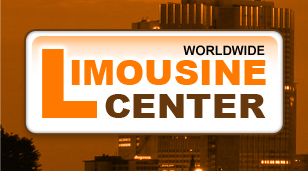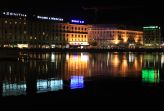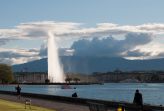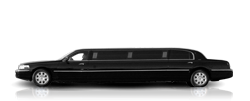
|
|
Private transfer service in Geneva from Limousine Center Switzerland
GET THE BEST OFFER EASILY
FREE!Multiple offers, directly from our local Partners!
- Limousine Center
- ›
- Geneva transfer
- ›
- Private transfer Geneva to Sion
Transfer from Geneva to Sion
Private transfer service from Geneva.
People loves when they can find everything in one place. And they also love when they can sit back and enjoy the uninterrupted personalized services. Do you love this too? Of cours you do! This is why Limousine Center will help for you to find a reliable chauffeur service in Geneva with an exclusive Limousine.
Do not waste your time with searching hours for reliable Limousine companies in Geneva. Just fill the forms and wait for the Limousine offers.

Whether you travel alone for personal purpose, for business or with a group you will find here the best ride for your needs.
If you are on the way just download the Android app of Limousine Center and fill out the form.
Limousine Center is able to connect you with local reliable chauffeur companies which have local knowledge and premium Limousine also.
Download Limousine Center's free Android app and manage your transfers with us.
Our customers said
 |
Simonetta Clucher from Italia: Good Service!!! |
 |
Steven Jin from China: Good and effcient service. Thanks. |
| Geneva |
| Geneva is the second most populous city in Switzerland (after Zurich) and is the most populous city of Romandy, the French-speaking part of Switzerland. Situated where the Rhone exits Lake Geneva, it is the capital of the Republic and Canton of Geneva. The municipality (ville de Genève) has a population (as of August 2011) of 191,803, and the canton (République et Canton de Genève, which includes the city) has 466,536 residents. In 2007, the urban area, or agglomération franco-valdo-genevoise (Great Geneva) had 1,240,000 inhabitants in 189 municipalities in both Switzerland and France. The economic area "Great Geneva-Bern area" has 2,9 million inhabitants. Geneva is a global city, a financial centre, and worldwide centre for diplomacy and the most important UN international co-operation centre with New York thanks to the presence of numerous international organizations, including the headquarters of many of the agencies of the United Nations and the Red Cross. It is also the place where the Geneva Conventions were signed, which chiefly concern the treatment of wartime non-combatants and prisoners of war. Geneva was ranked as the world's thirteenth most important financial centre for competitiveness by the Global Financial Centres Index, ahead of Frankfurt, and third in Europe after London and Zürich. and a 2009 survey by Mercer found Geneva to have the third-highest quality of life of any city in the world (narrowly outranked by Zurich). The city has been referred to as the world's most compact metropolis and the "Peace Capital." |
 |  |  |  |  |  |  |  |  | |||||||||
| Weather | WikiPedia | WikiTravel | TripAdvisor | Web | Geneva Airport | Hotels | Map | Pictures |
This article uses briefed material from the Wikipedia article Geneva, which is released under the Creative Commons Attribution-Share-Alike License 3.0, just as this article about the city.
| Sion |
| Sion is the capital of the Swiss canton of Valais. As of December 2010 it had a population of 30,363. Landmarks include the Basilique de Valère and Château de Tourbillon. Sion has an airfield for civilian and military use and which serves as a base for countless life-saving air rescue missions. FC Sion is the local football team. They currently compete in the Swiss Super League. Sion is one of the most important pre-historic sites in Europe. The alluvial fan of Sionne, the rocky slopes above the river and, to a lesser extent, Valeria and Tourbillon hills have been settled nearly continuously since antiquity. The oldest trace of human settlement comes from 6200 BC during the late Mesolithic. Around 5800 BC early Neolithic farmers from the Mediterranean settled in Sion. The settlements remained small until about 4500 BC, during the middle Neolithic, when the number of settlements increased sharply. To support the population increase, farming and grazing spread throughout the valley. They also began burying their dead in Chablandes-type stone burial cists with engraved anthropomorphic stelae. The individual graves changed at the beginning of the third Millennium BC in large, dry stone wall communal tombs (such as the Dolmen of Le Petit-Chasseur). During the Beaker culture period in the second half of the third Millennium, dolmens were built once again, but they were smaller and had no podium. Stelae continued to be carved, though these were rich with geometric patterns and sometimes built out of old dolmen. At the beginning of the Early Bronze Age (around 2300 BC) the last stelae were erected. |
 |  |  |  |  |  |  |  | ||||||||
| Sion Weather | Sion WikiPedia | Sion TripAdvisor | Sion Web | Sion Airport | Sion Hotels | Sion Map | Sion Pictures |
This article uses briefed material from the Wikipedia article Sion, Switzerland, which is released under the Creative Commons Attribution-Share-Alike License 3.0, just as this article about the city.



















